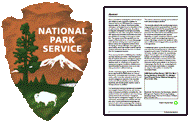United States National Park Service

United States National Park Service: Publications
Date of this Version
2008
Abstract
Most of us began our park careers hoping to work outdoors and, in the process, do something positive for the environment. As we progressed from seasonal to permanent employees, and from trainees to supervisors,we were given more administrative duties.Now, the everyday tasks making up the majority of our jobs, like staff meetings, report writing, and budgeting, leave us little time to actually protect resources.
While we balance budgets and attend meetings, fossils, insects, mining equipment, Native American artifacts, and reptiles located on the public lands are being plundered. Some of them are taken as “souvenirs,” but a sizeable percentage is taken by people possessing specialized knowledge and seeking specific resources. Many park resources, thus, are being commercially exploited, as Operation Indian Rocks and Operation VIPER show.
Operation Indian Rocks, a multi-agency criminal investigation into the theft and trafficking of cultural resources, began in Death Valley National Park. Ultimately, the operation recovered over 11,000 artifacts and resulted in the criminal convictions of eight individuals and one corporation for looting sites managed by a minimum of five different agencies in at least five states.


Comments
Published in Weber, Samantha, and David Harmon, eds. 2008. Rethinking Protected Areas in a Changing World: Proceedings of the 2007 GWS Biennial Conference on Parks, Protected Areas, and Cultural Sites. Hancock, Michigan: The George Wright Society.